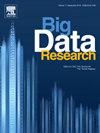聚落模式、官方统计和地缘经济动态:来自意大利LADISC方法的证据
IF 4.2
3区 计算机科学
Q2 COMPUTER SCIENCE, ARTIFICIAL INTELLIGENCE
引用次数: 0
摘要
作为解释定居模式的关键因素,领土和社会经济因素- -例如海拔或靠近水体或基础设施- -在有利于城市化地区的当代趋势中正在演变。在城市生活成本和住房供应带来的挑战中,过去几十年转型的城市中心吸引了更年轻的人口,因为它们固有地靠近服务和基础设施。本研究扩展了纬度、海拔、离海距离和靠近主要城市(LADISC)模型,整合了两个额外的地理指标,为分析人口分布趋势提供了一个完善的框架。与依赖行政边界的传统方法不同,该模型将地质统计学技术应用于高分辨率人口普查数据,为意大利的定居演变提供了详细和动态的视角。通过探索性统计技术对官方数据挖掘进行高级应用,可以发现城市中心大量集中的老年人口,强调需要量身定制的医疗保健服务和城市便利设施。相反,我们发现年轻人口正在向郊区分散,反映出偏好和流动模式的突然转变。这种趋势促使重新评估城市规划和(可持续)发展战略,以适应不同的人口需要。我们的研究进一步探讨了Covid-19大流行对人口分布的影响,表明远程工作和数字互动的潜在激增最有可能重塑城郊住区。通过改进LADISC框架,本研究提出了一种处理大规模人口普查数据的创新方法,允许空间明确的人口分析,比传统方法更准确地捕捉人口变化。本文章由计算机程序翻译,如有差异,请以英文原文为准。
Settlement patterns, official statistics and geo-economic dynamics: Evidence from a LADISC approach to Italy
Taken as pivotal in explaining settlement patterns, territorial and socioeconomic factors — such as elevation or proximity to water bodies or infrastructures — are evolving amid contemporary trends favouring urbanized areas. Urban centers, transformed over the past decades, attract younger populations because of the inherent proximity to services and infrastructure, amid challenges posed by urban living costs and housing availability. This study extends the Latitude, Altitude, Distance from the Sea, and Proximity to Major Cities (LADISC) model, integrating two additional geographic metrics to provide a refined framework for analyzing population distribution trends. Unlike traditional approaches that rely on administrative boundaries, this model applies geostatistical techniques to high-resolution census data, offering a detailed and dynamic perspective on settlement evolution in Italy. Advanced applications of official data mining with exploratory statistical techniques allow for the uncovering of a significant concentration of elderly populations within urban centers, underscoring the needed for tailored healthcare services and urban amenities. Conversely, we found that younger populations are decentralizing towards suburban areas, reflecting a sudden shift in preferences and mobility patterns. Such trends prompt a reassessment of urban planning and (sustainable) development strategies to accommodate diverse population needs. Our study further explores the impact of Covid-19 pandemic on population distribution, suggesting a potential surge in remote working and digital interactions that are most likely to reshape peri‑urban settlements. By refining the LADISC framework, this study presents an innovative methodology for handling large-scale census data, allowing for spatially explicit demographic analysis that captures population shifts more precisely than traditional methods.
求助全文
通过发布文献求助,成功后即可免费获取论文全文。
去求助
来源期刊

Big Data Research
Computer Science-Computer Science Applications
CiteScore
8.40
自引率
3.00%
发文量
0
期刊介绍:
The journal aims to promote and communicate advances in big data research by providing a fast and high quality forum for researchers, practitioners and policy makers from the very many different communities working on, and with, this topic.
The journal will accept papers on foundational aspects in dealing with big data, as well as papers on specific Platforms and Technologies used to deal with big data. To promote Data Science and interdisciplinary collaboration between fields, and to showcase the benefits of data driven research, papers demonstrating applications of big data in domains as diverse as Geoscience, Social Web, Finance, e-Commerce, Health Care, Environment and Climate, Physics and Astronomy, Chemistry, life sciences and drug discovery, digital libraries and scientific publications, security and government will also be considered. Occasionally the journal may publish whitepapers on policies, standards and best practices.
 求助内容:
求助内容: 应助结果提醒方式:
应助结果提醒方式:


